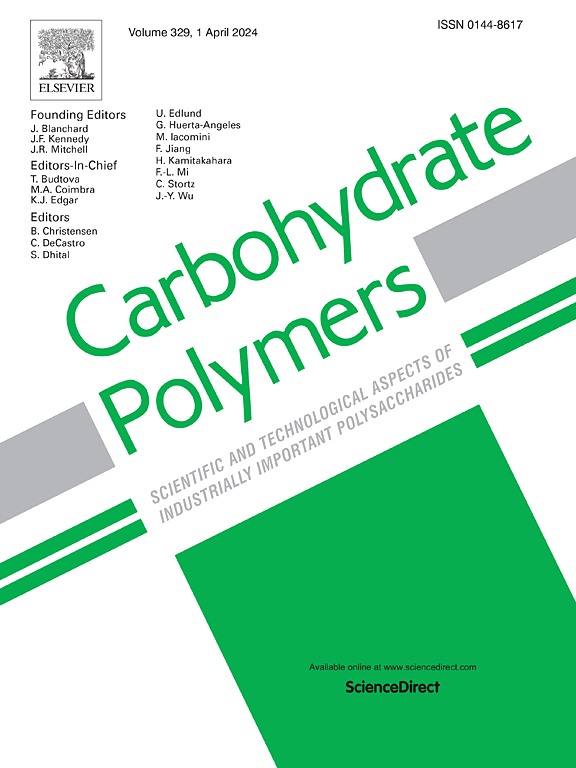高韧性、高稳定性、低迟滞PVA /HPMC/PA/SBMA/ZnCl2导电水凝胶,用于多功能传感器和超级电容器的可穿戴柔性电子产品
IF 10.7
1区 化学
Q1 CHEMISTRY, APPLIED
引用次数: 0
摘要
pva基导电水凝胶在可穿戴柔性电子器件中具有巨大的应用潜力,但其低离子电导率和机械强度阻碍了其实际应用。为了解决这一挑战,我们提出了一种基于聚乙烯醇的结合金属盐和两性阴离子的材料。我们利用PA(植酸)和HPMC(羟丙基甲基纤维素)-相容性制备了PSBMA1-PMAZ1.5互穿导电水凝胶,该水凝胶具有良好的电信号响应性、重复性、抗压缩性和低迟滞(≤11.68%)。基于水凝胶的柔性应变传感器具有宽检测范围,高灵敏度(在0 - 600%时GF = 1.1),对温度和湿度变化的稳定电信号响应以及人体运动检测能力。基于水凝胶的超级电容器的检测范围为25°C - 40°C,这表明以活性炭为电极组装的器件具有良好的电容特性,PSBMA1-PMAZ1.5水凝胶的多功能特性有望为新一代柔性电子产品提供示范。本文章由计算机程序翻译,如有差异,请以英文原文为准。

High toughness, high stability and low hysteresis PVA /HPMC/PA/SBMA/ZnCl2 conductive hydrogels for wearable flexible electronics for multifunctional sensors and supercapacitors
PVA-based conductive hydrogels have enormous potential for applications in wearable flexible electronic devices, but their low ionic conductivity and mechanical strength hinder their practical utility. To address this challenge, we propose a PVA-based incorporating metal salt and zwitterion. We use PA(phytic acid) and HPMC (hydroxypropyl methylcellulose) - compatible properties to prepare PSBMA1-PMAZ1.5 interpenetrating conductive hydrogel with good electrical signal responsiveness, repeatability, compression resistance, and low hysteresis (≤11.68 %). The hydrogel-based flexible strain sensor has a wide detection range, high sensitivity (GF = 1.1 at 0 − 600 %), stable electrical signal response to variations in temperature and humidity, and human movement detection capabilities. The detection range of hydrogel - based supercapacitors is 25 °C - 40 °C, which indicates that the device assembled with activated carbon as the electrode has good capacitance characteristics, and the multifunctional characteristics of PSBMA1-PMAZ1.5 hydrogels are poised to serve as a demonstration for a new generation of flexible electronic products.
求助全文
通过发布文献求助,成功后即可免费获取论文全文。
去求助
来源期刊

Carbohydrate Polymers
化学-高分子科学
CiteScore
22.40
自引率
8.00%
发文量
1286
审稿时长
47 days
期刊介绍:
Carbohydrate Polymers stands as a prominent journal in the glycoscience field, dedicated to exploring and harnessing the potential of polysaccharides with applications spanning bioenergy, bioplastics, biomaterials, biorefining, chemistry, drug delivery, food, health, nanotechnology, packaging, paper, pharmaceuticals, medicine, oil recovery, textiles, tissue engineering, wood, and various aspects of glycoscience.
The journal emphasizes the central role of well-characterized carbohydrate polymers, highlighting their significance as the primary focus rather than a peripheral topic. Each paper must prominently feature at least one named carbohydrate polymer, evident in both citation and title, with a commitment to innovative research that advances scientific knowledge.
 求助内容:
求助内容: 应助结果提醒方式:
应助结果提醒方式:


